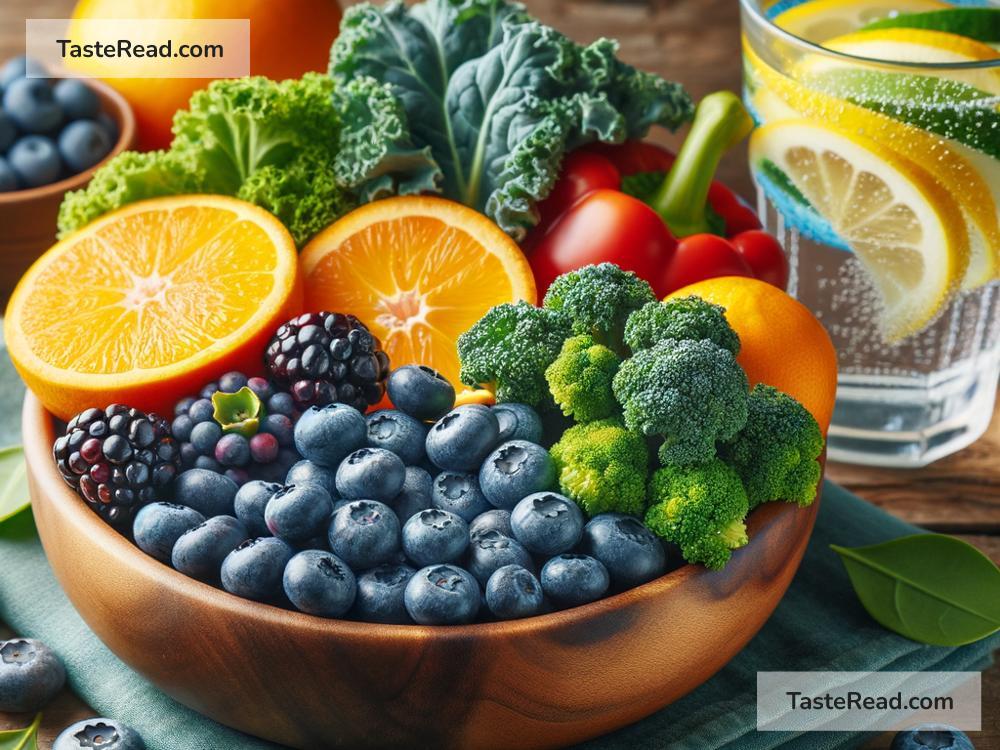Foods to Help Reduce Capillary Leakage: Simple Solutions for Better Health
Capillary leakage, medically known as capillary permeability, happens when tiny blood vessels, called capillaries, become too porous or “leaky.” These vessels are responsible for carrying blood, oxygen, and nutrients throughout your body. If the walls of these capillaries start leaking fluid into surrounding tissues, it can lead to swelling, inflammation, and discomfort. This condition is common in people with high blood pressure, diabetes, or other health issues, but the good news is that your diet can play a big role in strengthening capillaries and improving their function.
In this blog, we’ll discuss simple foods that may help reduce capillary leakage. These natural options are packed with nutrients that promote vascular health and reduce inflammation.
1. Citrus Fruits
Citrus fruits like oranges, lemons, and grapefruits are rich in vitamin C. This vitamin is essential for collagen production, which strengthens capillary walls and makes them less prone to leakage. Vitamin C also acts as an antioxidant, protecting capillaries from damage caused by free radicals (unstable molecules).
How to add citrus to your diet:
– Start your day with a glass of fresh orange juice.
– Add lemon slices to your water for a refreshing twist.
– Snack on grapefruits or tangerines for a burst of flavor and nutrients.
2. Leafy Greens
Spinach, kale, and other leafy greens are packed with vitamin K, which plays a crucial role in blood clotting and maintaining healthy capillary walls. These vegetables also contain powerful antioxidants and anti-inflammatory compounds that support overall vascular health.
How to enjoy leafy greens:
– Toss spinach or kale into smoothies.
– Make a fresh salad with mixed greens, avocado, and olive oil.
– Sauté collard greens with garlic as a simple side dish.
3. Berries
Berries such as blueberries, strawberries, and raspberries are known for their high levels of flavonoids and antioxidants. Flavonoids improve capillary elasticity and combat inflammation, reducing the risk of leakage.
Easy ways to eat berries:
– Blend them into breakfast smoothies.
– Sprinkle berries on oatmeal or yogurt.
– Snack on them as a healthy alternative to processed sweets.
4. Nuts and Seeds
Nuts like almonds and seeds such as flaxseeds or sunflower seeds are rich in vitamin E, an antioxidant that protects capillaries from oxidative damage. Vitamin E also improves blood circulation and maintains the integrity of blood vessels.
Tips for incorporating nuts and seeds:
– Add a handful of nuts to your trail mix or snack bowl.
– Sprinkle seeds over salads or stir them into smoothies.
– Use almond or sunflower seed butter as a spread on whole-grain bread.
5. Fatty Fish
Fatty fish like salmon, mackerel, and sardines are excellent sources of omega-3 fatty acids. These healthy fats reduce inflammation and improve blood flow, helping your capillaries function properly. Omega-3s are also known to strengthen blood vessel walls, lowering the risk of leakage.
How to enjoy fatty fish:
– Grill or bake salmon for a quick, healthy dinner.
– Make a tuna salad using olive oil-based mayo.
– Add smoked mackerel or sardines to a sandwich for extra nutrition.
6. Garlic and Onions
Both garlic and onions contain compounds like allicin that improve circulation, reduce inflammation, and protect capillary walls. These foods also act as natural blood thinners, reducing the pressure on capillaries and helping them stay strong.
Ways to use garlic and onions:
– Add minced garlic to salad dressings or marinades.
– Include onions in soups, stews, or stir-fries.
– Roast garlic to create a rich, creamy spread for bread or crackers.
7. Whole Grains
Whole grains like oats, quinoa, and brown rice are rich in fiber, which helps regulate blood sugar and cholesterol levels. High blood sugar and cholesterol can weaken capillaries, so eating more of these healthy grains keeps your vascular system in top shape.
Simple options for whole grains:
– Replace white rice with quinoa or brown rice.
– Start your morning with a bowl of oatmeal topped with berries and seeds.
– Choose whole-grain bread or pasta over refined versions.
8. Green Tea
Green tea is full of catechins, powerful antioxidants that reduce inflammation and strengthen blood vessels. Regular consumption of green tea has been linked to improved circulation and reduced risk of capillary leakage.
How to enjoy green tea:
– Sip a warm cup of green tea in the morning or afternoon.
– Make iced green tea with lemon and honey for a refreshing treat.
– Add matcha powder (concentrated green tea) to smoothies or baked goods.
9. Dark Chocolate
Good news for chocolate lovers! Dark chocolate contains flavonoids that boost capillary health and improve blood flow. Choose dark chocolate with at least 70% cocoa content to get the most benefits.
Healthy ways to eat dark chocolate:
– Have a small piece of dark chocolate as a sweet treat.
– Use melted dark chocolate as a dip for fresh fruit.
– Add cocoa powder to smoothie bowls or oatmeal.
Takeaways
While capillary leakage can be concerning, eating the right foods can make a difference. Foods rich in vitamins, antioxidants, and healthy fats help strengthen capillary walls, reduce inflammation, and improve overall vascular health. Incorporate these foods into your diet consistently to support your body’s healing process.
If you’re struggling with capillary leakage, consult a healthcare professional for proper diagnosis and guidance. Combined with medical advice, a nutrient-packed diet can go a long way toward improving your health.
By making simple changes to your meals, you can take an active role in protecting your capillaries and living a healthier, more comfortable life. The path to wellness begins with one nutritious bite at a time!


